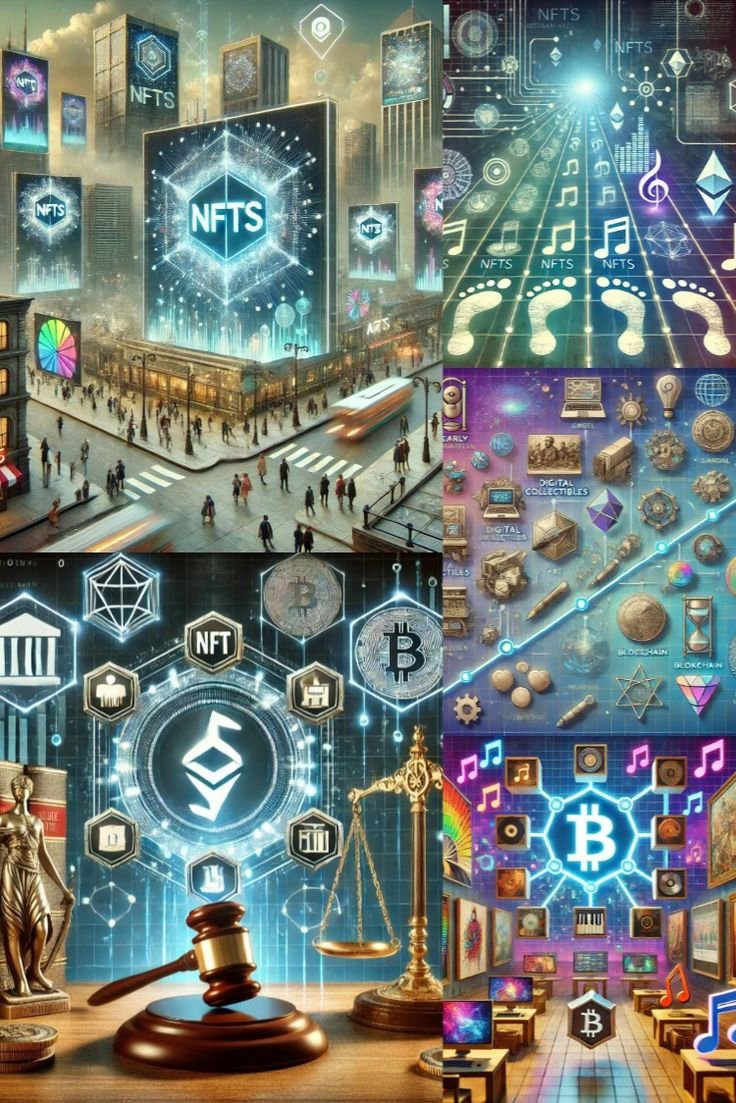The march of technology continues to reshape industries across the globe. In 2025, certain technological innovations are taking center stage, driving efficiencies, unlocking new opportunities, and creating solutions to longstanding challenges. From artificial intelligence (AI) redefining work processes to renewable energy pushing sustainability boundaries, these advancements aren’t just trends—they are directions.
This article dives into the top tech innovations that are revolutionizing industries in 2025, offering real-world applications and insights into their future potential.
1. Artificial Intelligence (AI): Ushering in a New Era of Smart Automation
Artificial intelligence has evolved into one of the core drivers of transformation across every major industry. More than just automating repetitive tasks, modern AI systems are now capable of predictive analysis, natural language processing (NLP), and decision-making.
Real-World Applications:
- Healthcare: AI is expediting medical diagnoses by analyzing vast datasets to detect diseases early. Tools like AI-powered imaging systems aid in identifying anomalies with unmatched precision.
- Retail: Personalized shopping experiences are being enhanced through AI-driven recommendation algorithms. Retailers are deploying AI bots to manage inventory in real-time.
- Manufacturing: AI-powered robotics are overtaking traditional assembly lines, improving productivity while reducing errors.
Looking forward, industries that adopt explainable AI (AI systems that clearly articulate decision-making processes) will see the most sustainable gains, as trust remains a critical factor for adoption.
2. Blockchain Technology: Beyond Cryptocurrencies
Blockchain technology has outgrown its origin in cryptocurrency. Its promise of secure, decentralized, and tamper-proof record-keeping is redefining various industries looking for enhanced transparency and security.
Real-World Applications:
- Finance: Blockchain-led decentralization continues improving cross-border payment processes, making them faster and cheaper.
- Supply Chain Management: Companies like Walmart and BMW are utilizing blockchain to ensure traceability, enabling ethical sourcing and real-time tracking of goods.
- Healthcare: Patient data is now managed more securely. Blockchain ensures accurate medical records while safeguarding against data breaches.
Blockchain’s future lies in interoperability between different systems, enabling seamless collaboration across industries without silos.
3. Quantum Computing: Solving Problems at Scale
Quantum computing, which leverages the principles of quantum mechanics, is breaking new ground in solving complex problems that traditional computers cannot handle efficiently.
Real-World Applications:
- Pharmaceuticals: Leading pharmaceutical companies are using quantum computing to accelerate drug discovery by modeling molecular structures with high precision.
- Finance: Quantum algorithms are optimizing investment portfolios by analyzing risks and opportunities far more effectively.
- Logistics: Major logistics firms are testing quantum systems to tackle supply chain optimization challenges, such as routing deliveries during peak demand.
Quantum computing in 2025 is still in its early stages but holds tremendous potential for industries reliant on large-scale data processing.
4. Renewable Energy Technologies: Accelerating Sustainability
The push for carbon neutrality has propelled renewable energy innovations to the forefront of industrial change. The focus in 2025 isn’t just on increasing energy production but also on improving storage and grid stability.
Real-World Applications:
- Energy Storage: Advances in battery technologies, such as solid-state batteries, are ensuring efficient energy storage, enabling consistent use of renewable energy sources.
- Transportation: Electric vehicles (EVs) are reaching new levels of efficiency with high-density batteries and wireless charging infrastructure.
- Smart Grids: Renewable energy is being integrated seamlessly into urban power systems with smart grids enabling dynamic energy allocation.
Hydrogen-based technologies are also making waves, with industries like aviation and shipping expected to benefit from green hydrogen as a clean alternative fuel.
5. Internet of Things (IoT): Creating Comprehensive Connected Ecosystems
The Internet of Things is no longer restricted to smart homes. IoT is weaving a web of connected devices across industries, offering actionable insights and improved operational efficiencies.
Real-World Applications:
- Agriculture: Smart sensors monitor soil health, weather conditions, and crop statuses to optimize yields while reducing water and fertilizer waste.
- Healthcare: Wearable devices continuously monitor patient vitals and send alerts for abnormalities, revolutionizing chronic disease management.
- Urban Development: Smart cities equipped with IoT infrastructure manage traffic, reduce energy wastage, and create safer public spaces.
The key to IoT’s future is edge computing, which processes data closer to its origin, significantly reducing latency and enhancing real-time decision-making.
6. Extended Reality (XR): Redefining Interaction Across Industries
Extended reality, encompassing virtual reality (VR), augmented reality (AR), and mixed reality (MR), is increasing its foothold in a wide array of applications, blurring the lines between physical and digital experiences.
Real-World Applications:
- Education: AR-powered simulations are transforming learning by offering hands-on virtual experiences in fields like anatomy and engineering.
- Retail: XR technologies allow customers to try products virtually—whether it’s visualizing furniture placement in their homes or experimenting with makeup apps.
- Healthcare: VR-based therapies are being developed to treat mental health issues such as anxiety, PTSD, and phobias.
The development of lightweight, affordable wearable devices will determine XR’s mass adoption across industries.
7. Autonomous Systems and Robotics
Autonomous systems, powered by advanced robotics, are gradually reducing the need for human intervention in high-risk, high-stakes, or repetitive operations.
Real-World Applications:
- Agriculture: Self-driving tractors and autonomous crop sprayers are becoming the norm, increasing productivity while cutting labor costs.
- Logistics: Autonomous drones and delivery robots are redefining last-mile delivery, ensuring faster and cost-effective package handling.
- Construction: Robotic systems are now laying bricks and even 3D-printing entire building structures.
The convergence of AI and IoT within autonomous systems is paving the way for adaptive robots capable of learning and improving autonomously over time.
8. Biotech Breakthroughs Transforming Healthcare
Biotechnology is arguably spearheading the most direct-life impact innovations. With the integration of genetic engineering and bioinformatics, groundbreaking solutions are emerging in health and environmental management.
Real-World Applications:
- Precision Medicine: Tailored treatment approaches based on individual genetic profiles are becoming increasingly mainstream.
- Synthetic Biology: Innovations like lab-grown meat aim to address food security and environmental sustainability.
- Vaccines and Therapies: Messenger RNA (mRNA) technology continues to revolutionize vaccines, as evident during the COVID-19 pandemic.
The use of AI in biotech accelerates drug testing processes, reducing both costs and timeframes.
9. Cybersecurity Enhancements
Rapid technological advancements come with risks, particularly in data security. New-age cybersecurity solutions are critical for safeguarding digital ecosystems.
Real-World Applications:
- Predictive Threat Responses: AI can now identify and neutralize threats before they cause significant damage.
- Decentralized Security Models: Blockchain and distributed systems are providing robust data encryption methods.
- Behavioral Analytics: Monitoring user behavior patterns helps identify and mitigate insider threats.
Investment in cybersecurity continues to grow as data breaches become increasingly sophisticated.
Final Thoughts
The technological innovations of 2025 are reshaping industries at remarkable speed, bridging gaps that once seemed insurmountable. The adoption of AI, blockchain, quantum computing, renewable energy, and other cutting-edge tools is not just improving operational efficiencies but also tackling global challenges like sustainability, health crises, and resource management.
For businesses, staying abreast of these advancements isn’t optional; it is imperative to remain competitive in an increasingly tech-driven world. By aligning with these innovations, companies can redefine how they operate and unlock new levels of growth and impact.




